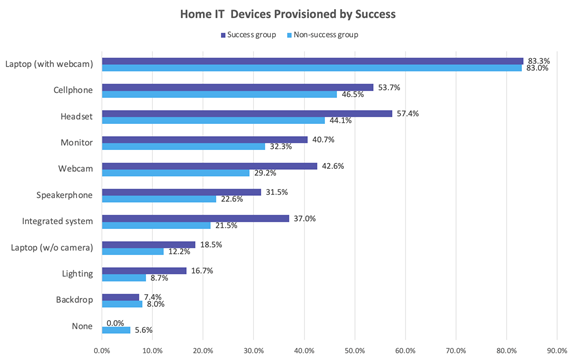Not less than a week after the conclusion of the first in-person Enterprise Connect conference in more than two years, where the need to support hybrid work was a major theme, comes news that HP has announced an intent to buy Poly. The approximately-$3.3 billion deal instantly catapults HP to a market-leading position in the unified communications (UC) and video conferencing endpoint space thanks to Poly’s wide array of devices including desktop and USB phones, headsets, and personal and room-based video conferencing products as well as managed services.
HP is hardly a stranger to the UC space. As Ryan Daily
noted in her earlier piece, HP’s current UC portfolio includes products such as the HP Presence line for personal video collaboration, as well as the Elite Slice G2 for conference rooms. HP has also partnered with Jabra to combine the Elite Slice G2 with Jabra PanaCast cameras and has resold Jabra headsets. HP also currently offers an Elite Slice bundle with the Logitech Brio camera. All of these partner offerings are likely to end assuming the Poly sale is approved by shareholders.
However, the acquisition of Poly allows HP to drastically expand its ability to support customers as they develop and implement hybrid work strategies. Metrigy’s Unified Communications and Collaboration Management and Endpoints 2021-22 global study of approximately 400 end-user organizations found that just 20.4% planned to bring employees back to the office on a full-time basis. For most companies, the age of hybrid and remote work is here to stay.
The shift to hybrid work means that IT, business, facilities, and even HR leaders are increasingly focusing on optimizing collaboration and communication experiences so teams are able to work together and engage with customers, regardless of work location. Our study found that:
- 55.1% of companies are increasing video conferencing room system deployments, with 31.2% having a stated goal of having video conferencing systems in all meeting rooms
- 40.9% of companies will provision high-quality personal video devices to in-office employees while 52.8% will provision them to remote employees
- 59.4% of companies provision company-purchased headsets
- 45.7% of companies are implementing apps to manage headset and video endpoint performance, inventory, provisioning, and software
We find as well that successful companies, defined as those with above average ROI for their collaboration investments, are significantly more likely to provision collaboration devices to their remote employees rather than rely on existing phones and headsets, or use consumer-grade devices.
With Poly on board, HP can now offer several advantages including:
- Integrating Poly devices and technology into the rest of the HP portfolio including monitors, laptops and PCs, and virtual computing devices
- Expanding Poly’s global reach into HP’s channels and partners, including HP’s direct-to-consumer platform
- Leveraging the HP brand, one that is a household name around the world
- Enabling customers to implement a single management strategy for all peripherals including not just the Poly portfolio, but also other HP devices including monitors, keyboards, mice and docking stations
Of course, there are a few areas of concern from this acquisition. The most notable is the future of Poly’s managed services offering, given that HP has primarily been a products company after its 2015 split pushed managed services over to HPE. It is likely that HP would rely on partners for managed services rather than invest in managed services of its own.
Another area of concern is whether the Poly brand and organization will retain some level of independence, or whether it will simply merge into the overall HP domain, and how the merger will impact future product research and development. Whether or not HP will continue to invest in ensuring that Poly continues to deliver market-leading technology, or whether it will focus on cost minimization to achieve high sales volumes remains to be seen.
For existing HP and Poly customers, the combination of the two companies should provide reinforcement that HP/Poly is committed to offering a broad range of products for in-office and remote work, as well as potential for management simplification once Poly and HP management products are fully integrated. The combined companies should also be able to more effectively compete for new business by offering products, and device management, that integrates all individual peripherals as well as meeting room systems.











